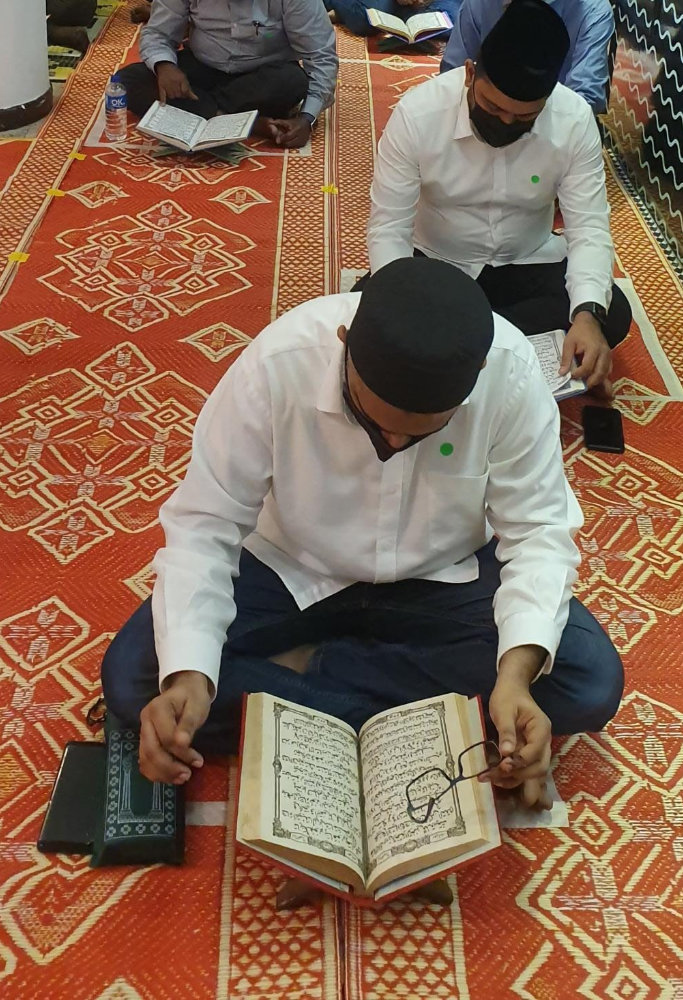About
Nagore Dargah
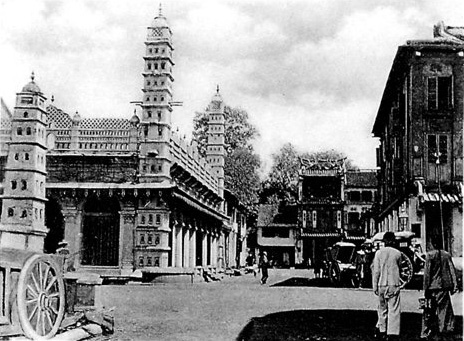
History of Nagore Dargah Memorial
This Singapore memorial to the Saint of Nagore, Shahul Hamid Qadir Wali Ganjasavoy (born in Manikpur, India in 1504 AD and interred in 1570 CE in Nagore, India) was built by the Chulia Muslims – Tamil-speaking Muslims from the Coromandel Coast of India – in the early 19th Century.
When sea-faring was a long, arduous and risky venture, sailors and merchants of the Coromandel Coast of India would say a heartfelt prayer in the direction of the Nagore Dargah mausoleum in Nagore before setting off from the port of Nagapatnam. This memorial in Singapore and others in Aceh, Yangon, and in Penang were built as acts of thanksgiving to the Saint of Nagore for safe passage. Even though he had lived in the 16th Century, he continues to be regarded as the patron saint of sea-farers of the Coromandel Coast.
This memorial was one of the taller buildings when it rose in Telok Ayer, then part of the coast of Singapore. The latticed front on the upper level afforded a good view of the sea, and approaching vessels would use the memorial as the landmark. Its three stepped minarets are believed to symbolise the masts of ships.
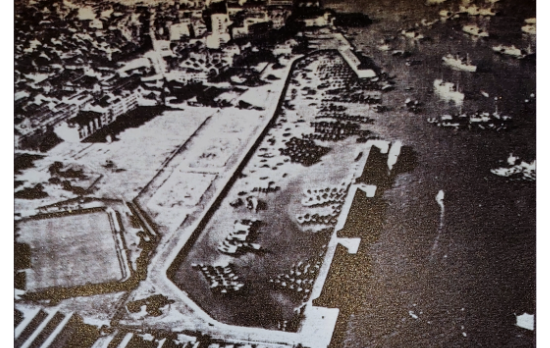
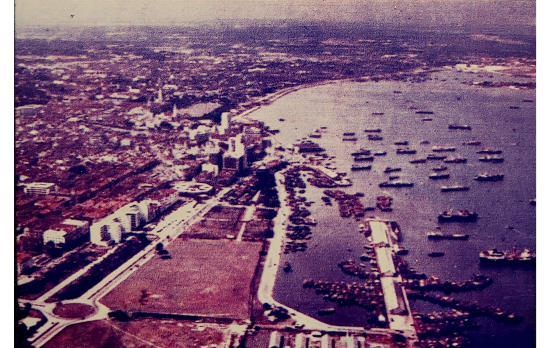
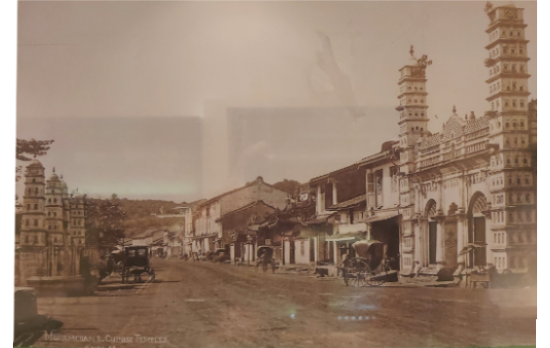
While colonial records show that the building was constructed between 1828 and 1830, other accounts claim that a structure of some sort had long preceded the setting up of a British trading post here as Indian Muslim trade, travel and faith networks were prominent in this part of the world well before the arrival of the Portuguese. The first structure is said to have been built of wood and attap. It was rebuilt in 1815 using limestone; and again in 1818 with materials imported from India. If this is true, it makes Nagore Dargah the oldest faith-linked monument in Singapore. Early photos also show the existence of a roofless enclosure with an equally intricate but smaller front, ahead of the memorial.
Over the years, with periodic reclamation, the coastline has moved further south. The memorial too has undergone several attempts at renewing its structure and its unique blend of construction befitting a
place of solace and reflection. While not a mosque, the memorial has occasionally served as a place of prayer when neighbouring mosques underwent renovation.
The Nagore Dargah memorial remains one of Singapore’s most poignant heritage buildings – an intricate reminder of sea travel, the faith and determination of early merchants and sailors, and their seminal attempt to open up a frontier and set the scene scene for a fledgling harbour that would one day become one of the busiest ports in the world.
Tracing the roots
Indian Muslims of Singapore
Muslims who trace their ancestry to the Indian subcontinent are referred to as Indian Muslims. They may belong to any of the several schools of Islamic jurisprudence and speak any of the twenty-or-so languages of the subcontinent.
Today, Indian Muslims are spread all over the world, well-integrated in their new nations, often absorbing cultures and languages, and even assimilated with host communities through marriage. Diverse
as they are, common connectors like dress, music and cuisine do bring them together. The observation of Indian Muslims not closing shop other than on the two ‘Eids’ and for congregational prayer on Fridays is stereotypical, but it bears out their values of thrift, discipline and hard work. In Singapore and Malaysia, one can easily spot this observation by their 24-hour restaurants.
About a quarter of all Indians in Singapore today profess Islam as their religion. The Indian connection to Southeast Asia goes back many centuries. They were part of a whole line of coastal communities from Africa to East Asia involved in shipbuilding, trading, and exchange of culture, languages and spirituality. The Indian Ocean proved ideal for sailing as the monsoons brought people back and forth the Bay of Bengal. Over the past millennium, the people from the Coromandel and Malabar coasts also influenced the cultural and political scenes of Southeast Asia, including those of Kedah, Malacca and the Johor-Riau.
The Chulia and Malabari merchants undertook a mission in late 14th century to see Emperor Yongle of the Ming Dynasty, and invited him to join them in sea trade that already included Siam and Malacca. Impressed by them, the emperor assigned Admiral Zheng He to embark on his famous voyages to Southeast Asia, South Asia, and the Middle East, as well as to decree that traders from India not be taxed in China.
The setting up of a British trading post in Singapore in 1819 attracted Indians to arrive here as merchants, petty traders, peons, drivers policemen and soldiers. As Madras was the first foothold of the British in Asia and as a good number of their brethren were already travelling to or settled in Penang and Malacca, most Indian Muslims came to Singapore from the Coromandel Coast. They spoke Tamil and were commonly referred to as ‘Chulias’ after the illustrious Chola dynasty of the past. Those who spoke Urdu were known as Dakhnis.
From the south-western Malabar Coast, came the Malayalam speakers, whose restaurants and spice-shops have long enriched Singapore’s culinary landscape. From further up
the coast, came the Gujarati Muslims, prominent as textile and spice merchants. Among
them were Sunnites, as well as Shiites – belonging to the Bohra and Khoja communities.
–
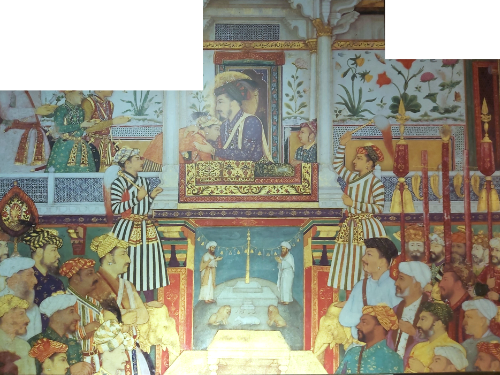

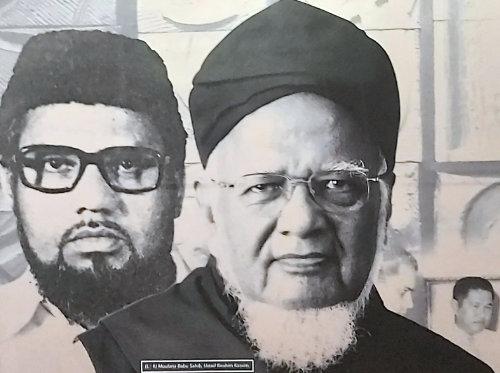
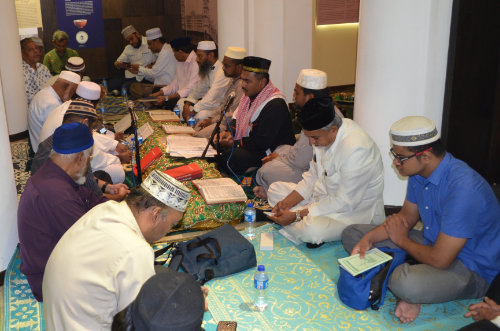



Who Is
Shahul Hamid (Wali’Allah)
Shahul Hamid was a 13th generation descendant of the renowned Sufi Wali, Muhiyudin Abd al-Qadir al-Jilani. According to some accounts, Shahul Hamid was born in 1490 in Manikkapur, in the modern state of Uttar Pradesh. The Nakur Puranam says that he lived for sixty-eight years and says he died Hijri 978, 10th day of Jamatul Ahir: corresponding to August 7 1579; this puts his date of birth in 1513.
The name given to him at birth was Sayid Abdul Khader. The books recount many miracles even when he was born. Shahul Hamid is said to have left home when he was eighteen and met his parents only eighteen years later. He went in search of spiritual truth and found a teacher in Sayid Muhammad Ghouse of Gwalior. Shahul Hamid stayed with him for ten years. He is credited with a charismatic personality and with hundreds of miracles: most Tamil biographies are filled with accounts of miracles.
After extensive travels all over the Middle East, (among the many places Iraq, Meeca and Yemen are named) the islands in the Indian Ocean and a vast entourage of disciples, Shahul Hamid is said to have reached South India. He entered the city of Nagore when he was forty-four. Apparently Shahul Hamid cured Achutappa Nayakar, the Hindu ruler of Thanjavur, of his physical problems because of sorcery.
The ruler then gratefully donated two hindered of acres of land to his entourage.
Eventually Shahul Hamid died when he was sixty-eight years old. After his death, his disciples–numbering over 400- split into 4 groups and spread in different directions, with the idea of gathering once a year during the anniversary kenduri celebrations. The first kenduri celebrations took place a year after his death. This is celebrated annually from the first day of the waxing moon in the month of Jamatul Ahir and reaches the peak of its celebrations on the tenth day. This day is considered by various sources as both his birthday and /or his death day.
Visit
140 Telok Ayer St, Singapore 068604
Contact
+65 9838 0025
info@ndsociety.sg
Opening Hours
Mon - Fri: 10:00am - 5.30pm
Sat: 9:00am - 1.00pm
Closed on Sun
